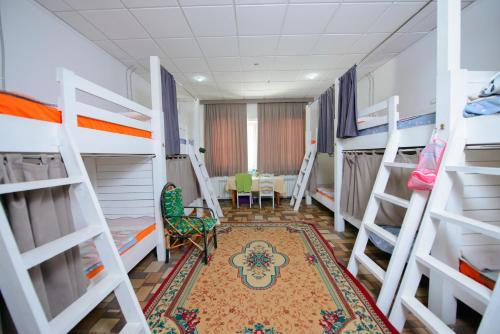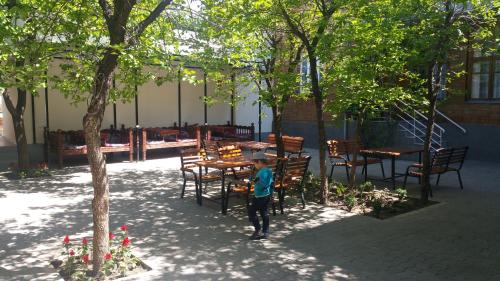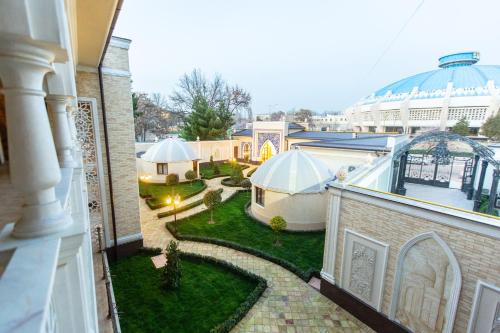Tashkent Metro Stations, Uzbekistan
Catching the Tashkent Metro takes you on two journeys.
One to the station where you want to go. And one on a trip through centuries of heritage and limitless artistic inspiration.
Because the Metro in Tashkent is more than just a public transport system. It is an underground gallery where each station is a work of art and each station has something to say.
Until recently, it had been a bit of secret – unseen by all except those who had taken a ride themselves in Tashkent. But now the authorities are allowing photography and so I can show you what it looks like inside.
History of the Tashkent Metro
To give the decorations of the stations in the Tashkent Metro a bit of context, it’s important to understand the history.
The Metro was opened in 1977 when Uzbekistan was still part of the USSR. So, it’s no surprise that you’ll get a distinct Soviet feel from much of the artwork.
But it was more than just simple Soviet pride that brought about the project. In 1966, Tashkent was hit by a devastating earthquake and much of the city was destroyed and 300,000 people were left homeless.
The government decided to use this devastation as an excuse to rebuild Tashkent as a model Soviet city – and, at the time, this also meant an impressive Metro system.
There are now 29 stations across 3 lines (the latest opened in 2001) and each has its own artistic theme. I don’t visit them all – just a selection – but what I notice is that they all tell a collective story.
The best Tashkent Metro stations
If you’re planning to visit the Tashkent Metro, it would be worth seeing a bit of the variety in the stations and the evolution of the art and its messages.
Interestingly, even the first stations that were built by the Soviets are not quite the brutalist propaganda style that you might normally associate with the art and architecture of the time. The more traditional Uzbek history comes through as a strong influence.
Take Pakhtakor station, for instance. Opened in 1977, it has colourful mosaics that represent the cotton-picking industry of Uzbekistan. No images of proud workers carrying flags or tools. Just colourful fun patterns.
You could even say that one of the most famous stations, Kosmonavtlar, is not what you would expect from Soviet art. True, it is honouring the cosmonauts of the USSR and their success in the Space Race – but there is an unusual ethereal and playful feel to their depictions.
At Gafur Gulom station, you can see how the Soviet Union was using Uzbekistan’s national identity as part of its propaganda movement. While it’s named after an Uzbek writer, a lot of Gafur Gulom’s work was about the Great Patriotic War, the USSR’s conflict with Germany in the 1940s.
But after Uzbekistan gained independence in 1991, true patriotic expression was allowed to blossom, and this is demonstrated by the Tashkent Metro stations that were built or decorated after that.
One of the best examples is at Alisher Navoi station, which is named after a very famous Uzbek writer from the 1400s.
Alisher Navoi is considered to be the founder of Uzbek literature and also had a big impact on architecture and the arts of the time. The turquoise images on the walls of the station show images from his stories, while the domed ceiling reflects the style of the mosques and madrasas that were built at the time.
The design of the station shows that Uzbekistan tried to shrug off the Soviet era quickly and began to celebrate the most majestic of its history – the Silk Road.
All of this is captured lavishly at Mustaqilliq Maidoni station, with its marble columns and glass chandeliers. It feels more like a ballroom or a palace foyer than a metro station.
There is no overt message in the geometric shapes of the design (although the stars are said to represent the Soviet missions into space). But it’s the name that tells the best story.
When the station was first opened in 1977, it was called Lenin Maidoni, meaning Lenin Square, the name of the enormous public plaza above it. But that space – and the station – were renamed to Mustaqilliq Maidoni, meaning Independence Square, after the fall of the Soviet Union.
As I said, riding the metro is a journey through history.
How to visit the Tashkent Metro
Taking a ride on the Tashkent Metro is very cheap and so, even aside from the artwork, it’s a great way to get around the city.
A ride costs 1400 som (about US$0.15) regardless of the distance you travel. You buy a little blue token at the station, and pop it into the gate as you go in. It will keep the token and at the end of your trip, you just walk out the exit.
If you are interested in seeing the art you can just use one token and see as many stations as you like before you exit. If you’re going to use the metro more than once during your stay, I would suggest buying a few tokens each time, to save the hassle of queuing before each trip.
With 29 stations in the system, you obviously won’t have time to see them all. To get a good range of the best Tashkent Metro stations, I recommend focusing on the Blue Line (Ozbekiston Line). This is where you’ll find highlights like Kosmonavtlar and Gafur Gulom.
Once you’ve seen a few stations on the Blue Line, get off at Alisher Navoi and do a transfer to the connected Pakhtakor (unlike many subway systems, if two lines cross, then each line has a unique station name).
From here, travel along the Red Line (Chilonzor Line) to see Mustaqilliq Maidoni and any others you’re interested in. Then change at Amir Temur Xiyoboni to the Green Line (Yunusabad Line) to see a few of the modern stations that were opened in 2001.
It’s quite exciting for me to be able to bring you photos from the Tashkent Metro because this was illegal until very recently. It was only in 2018 that people started being able to photograph the stations, 41 years after the system was first opened.
Photography was banned for so long because the Metro was considered to be a military installation because it was going to be used a nuclear bunker, if that was ever required.
I guess you can now take photos partly because the authorities have decided that a nuclear war is unlikely (or maybe there are better bunkers somewhere else). But it’s also clearly part of a shift in the country away from the totalitarianism and paranoia that became ingrained during the Soviet era and has taken a generation to dissipate.
You also see this change in Uzbekistan’s new tourism policy, which makes it easy for citizens of 65 countries to visit without a visa. Tourists from places like the EU and Australia can stay for up to 30 days without a visa. (Citizens from another 65 countries, including the USA, can easily get an e-visa.)
It’s great that it’s much easier to visit Uzbekistan these days because, although I’m pleased to share my photos of the Tashkent Metro, you really need to see it for yourself. It will be one of the highlights of your visit to the city.
THE BEST ACCOMMODATION IN TASHKENT
The most iconic accommodation in Tashkent, Hotel Uzbekistan, has seen better days (although you may like its Soviet history), so here are some nicer options.
BACKPACKER

There are a few hostels in Tashkent but I would recommend the popular Topchan for a good backpacker experience.
BUDGET

For a budget option, the Gulnara Guesthouse is a friendly and comfortable place.
BOUTIQUE

With traditional style used for the design of Mirzo Boutique Hotel, it’s a great place for something a bit upmarket.
LUXURY

And, of all the five-star hotels in Tashkent, I think the Hyatt Regency is the best one.
This publication is made possible by the support of the American People through the United States Agency for International Development (USAID) Competitiveness, Trade, and Jobs Activity in Central Asia. The contents of this publication are the sole responsibility of Time Travel Turtle and do not necessarily reflect the views of USAID or the United States Government.
WOW! I like the 2nd picture so much. I wish I could see it with my own eyes. Thank you for sharing it with us Michael! I’m so happy to have come across your blog. Look forward to your new posts.
p.s. the world is so cool!
Yeah, that is an amazing station, isn’t it! Good pick! The good news is that travelling in Uzbekistan isn’t nearly as difficult as people think. Perhaps you’ll be able to get to Tashkent and see it for yourself one day!
Although this post shows it was updated February 2023, it’s still a bit outdated – tokens are no longer required (you can simply tap your Visa). Also 30 day visa free travel is available to many more countries, and not just for over 65. Still trying to figure out the quieter time to travel – 3pm was a zoo!